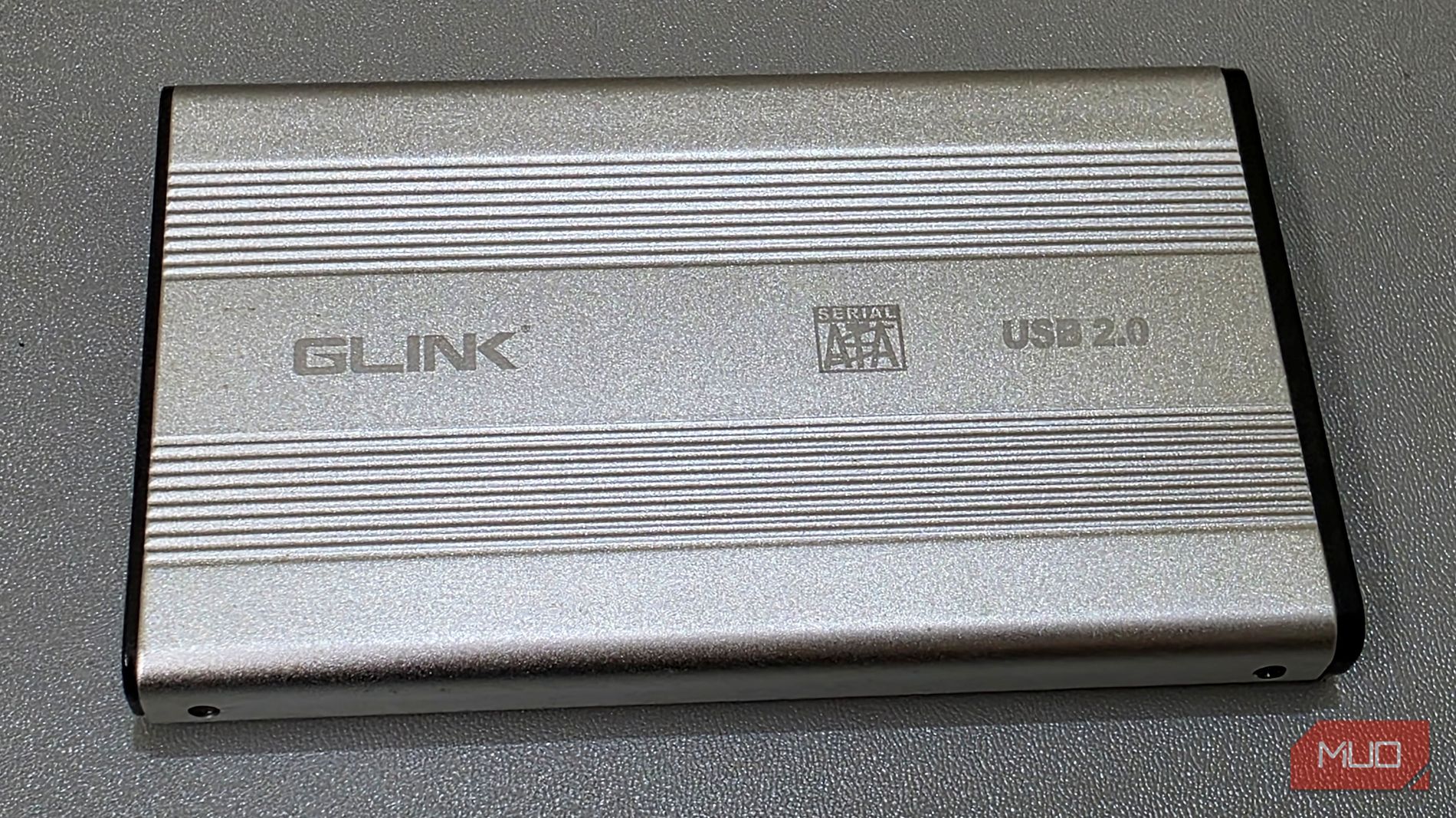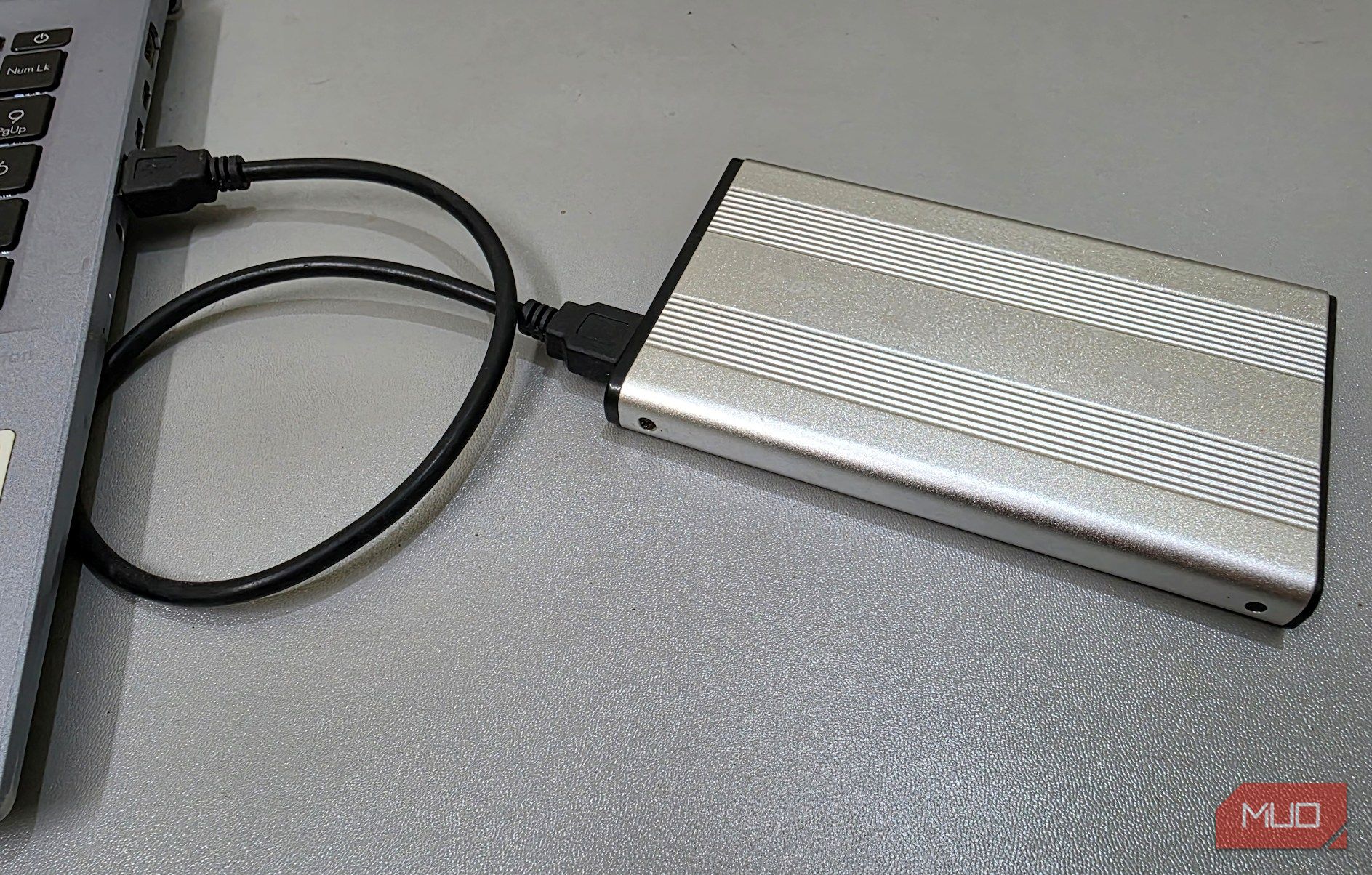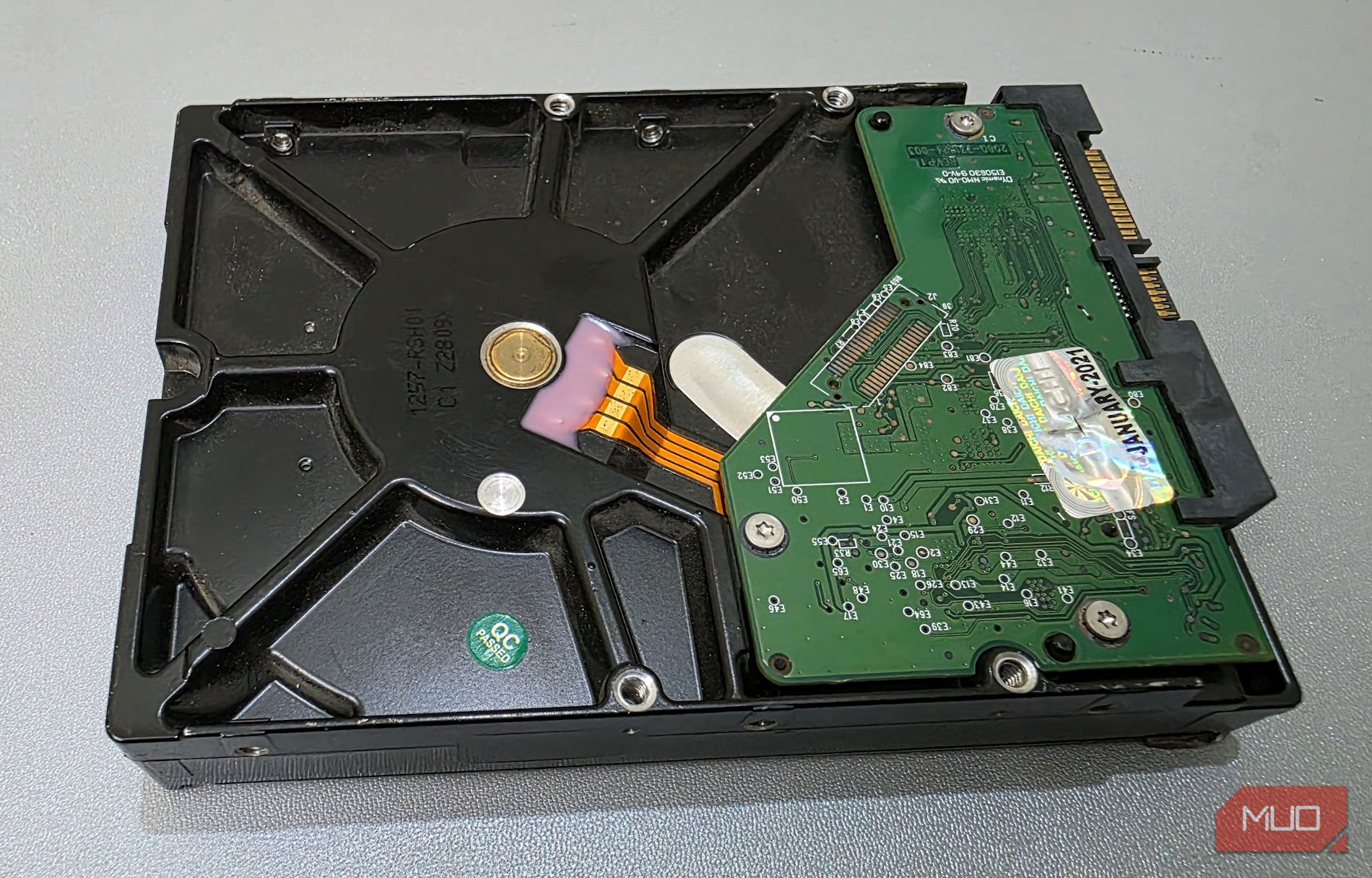Is there an old hard drive sitting in your drawer collecting dust? It doesn’t have to. I’ve found some cool, creative ways to reuse my old hard drives and make sure they don’t get thrown away.
4
Turn Them Into External Drives/Backup Storage
The first thing I do with an old hard drive is check whether it’s still functional. If it passes the basic checks, I turn it into an external storage device. It’s a simple and budget-friendly way to revive your drive. All you need is a decent external enclosure or a SATA-to-USB adapter to connect it to a Windows PC. Once it’s hooked up, format it using NTFS, and it’s ready to start storing data again.
I use these drives to hold large video files, ISO images, or full system backups. Windows Backup or third-party apps like Macrium Reflect make it easy to offload bulky data, keeping my main SSD free for daily tasks. I have an old 1TB drive that holds archived project folders, while another stores system images from different machines. It’s a practical way to repurpose hardware that would otherwise sit unused.
Before putting a drive in storage, it’s crucial to test it. CHKDSK on Windows can detect basic file system errors, but you can also try other diagnostic tools to check your PC’s health and get a clearer picture of the drive’s condition. If you notice strange noises, long delays, or repeated errors, it’s better not to rely on it. However, if everything appears to be in order, it can still be useful for storing non-critical files or extra data backups. Just remember, older drives are slower and less reliable, so they shouldn’t be your only backup.
Also, make sure to check compatibility. Most drives from the last 10 to 15 years use SATA, which is compatible with most modern hard drive enclosures. 3.5-inch hard drives often require enclosures with built-in power supplies, whereas 2.5-inch laptop drives can operate on USB power alone. Using a USB 3.0 or newer port will also improve transfer speeds, which is particularly helpful when moving large files.
3
Create a Secure Vault for Sensitive Files
Another smart way to reuse old hard drives is to turn them into secure vaults for sensitive data. If you don’t want your documents, financial records, or personal archives in your everyday system, store them on an external drive you can disconnect and keep offline.
Windows makes this process easy. If you’re using Windows Pro, Enterprise, or Education, you can encrypt the entire drive with BitLocker. That way, even if someone gets their hands on the drive, they won’t be able to access its contents without the right password. If you’re using a Windows Home version, you can utilize a third-party tool like VeraCrypt to encrypt the entire drive or select specific folders.
Once the drive is encrypted, move your sensitive files over and safely eject it when you’re done. I keep such a drive hidden away and only plug it in when needed; there’s no cloud syncing, no background access. It’s just a simple offline vault that keeps my data safe from digital threats.
If you have a security camera system installed in your home or office, chances are it comes with a digital video recorder (DVR) or network video recorder (NVR) for storing footage. Most of these systems have a dedicated slot for a 3.5-inch SATA hard drive, the same kind used in desktop PCs. So, if your drive is still in good working condition, you can install it directly into the recorder to capture and save video data.
The installation process is straightforward. Open the DVR or NVR unit, connect the hard drive using the SATA data and power cables inside, and mount it securely. When you power on the system, it will usually prompt you to format the drive before it begins recording. Once set up, the device will automatically save the footage directly to the hard drive.
The size of the hard drive directly affects how much footage you can store. A 500GB drive might only hold a few days of recordings, especially if you’re using multiple cameras or high resolutions. However, with a larger drive, like a 1TB or 2TB model, you can retain more footage before the system overwrites older data.
1
Repurpose Your Old Hard Drive for Virtual Machine Storage
If you enjoy testing operating systems, running simulations, or experimenting with different software environments, an old hard drive can be repurposed as dedicated storage for virtual machines. Instead of filling up your main system drive, you can install VM software like Hyper-V, VirtualBox, or VMware Workstation and configure it to store virtual hard disk files (VHD, VHDX, or VDI formats) on the old HDD. This approach keeps your primary SSD free from large virtual machine (VM) files and reduces system load during intensive tasks.
While older HDDs can’t match the performance of modern SSDs, they’re still suitable for light-duty virtual machines and general testing. You can run a Linux distribution, simulate a legacy Windows setup, or isolate a software sandbox, all without affecting your main installation.
If you no longer need your hard drive, don’t just throw it away. Instead, pass it on to someone who could use the extra storage. Before doing that, make sure to wipe the drive properly. DiskPart, a built-in tool on Windows, is a solid option for securely erasing everything. Just be sure to back up your critical system data, as this process is irreversible. After wiping, test the drive to ensure it’s still stable and not on its last legs.











Leave a Comment
Your email address will not be published. Required fields are marked *